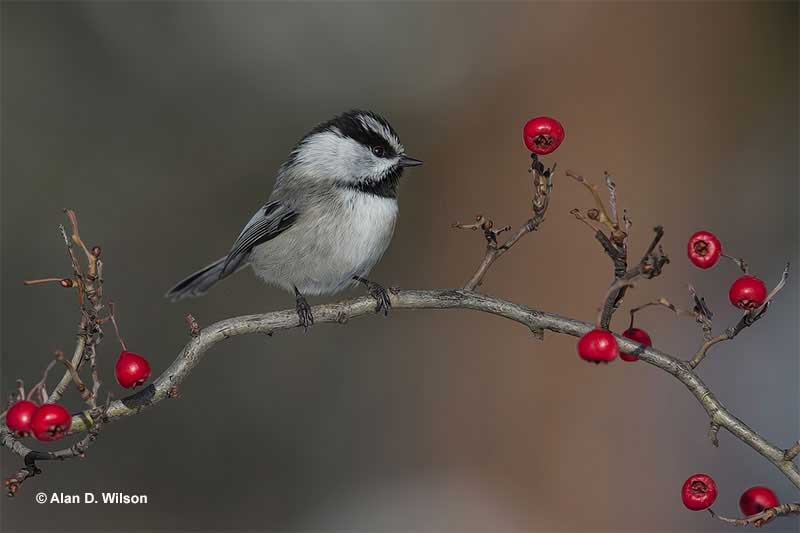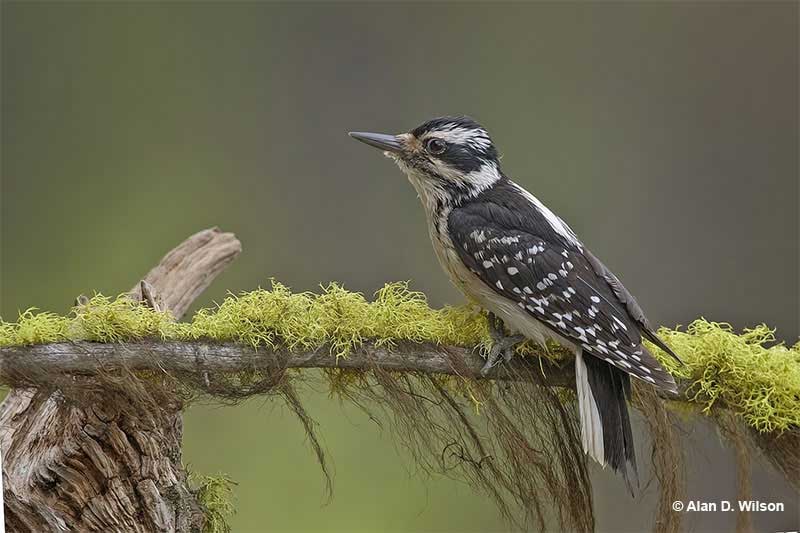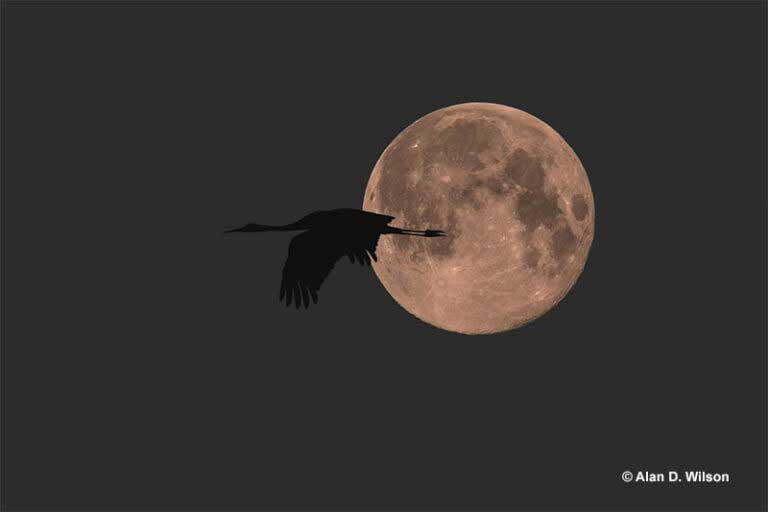Bird names often offer insights into various aspects of the bird’s identity, including its appearance, behavior, and vocalizations. Sometimes they were named after an important person.
For example, Magnificent Frigatebird and Masked Boobies are named after their physical characteristics, while the names for Mexican Jay and Mississippi Kite are based on their range. There is much to discover, including some juicy controversies, so dive in!
MacGillivray’s Warbler
MacGillivray’s Warblers are small warblers that prefer to spend most of their time foraging on the ground except when they sing their warbling churry-churry cheery-cheery song. They are olive above and yellowish below with males having a dark gray hood and females a light gray one with a greenish crest.
John James Audubon named the warbler after his friend Scottish naturalist William MacGillivray. However, neither of them was the first one to discover it. That honor goes to John Kirk Townsend who originally named the species Tolmie’s Warbler after surgeon William Fraser Tolmie.
Magnificent Frigatebird
Magnificent Frigatebirds are impressive seabirds named after their physical characteristics. They are the largest of the frigatebirds, measuring up to almost 4 feet long with a wingspan of up to 8 feet.
However, they are fairly light and have the largest wingspan to body weight ratio of any bird, giving them excellent maneuverability. They have blackish plumage, long and narrow wings, and deeply forked tails, and males have a scarlet throat pouch they inflate to impress females during the breeding season.
The term “frigatebird” itself comes from the French mariners’ name “la frégate” for the bird, referring to its resemblance to a fast warship or frigate. English sailors often referred to them as Man-of-War birds. They feed primarily by snatching prey, such as fish, squid, and crustaceans, from the ocean’s surface or by harassing other seabirds to steal their food.
Magnolia Warbler
Despite what the name suggests, Magnolia Warblers are not typically found near magnolia trees. They prefer coniferous trees, particularly young spruces, though they also frequent mixed forests and woodland edges where you can recognize them by their brief whistling weta-weta-WETA call.
The naming origins trace back to 1810 when Alexander Wilson stumbled upon one perched in a magnolia tree in Mississippi during the bird’s migration.
Dubbing it the Black-and-yellow Warbler after its plumage and assigning “magnolia” as its scientific name, the latter eventually became the English common name.
Mallard
The Mallard is the most widely distributed and recognizable species of duck, found throughout the temperate and subtropical regions of the Americas, Eurasia, and North Africa.
Males have a distinctive appearance with a glossy green head, chestnut brown breast, and a gray body. The species is the ancestor of nearly all domestic duck species and has also been an important game bird throughout time.
Their name originates from the Old French word “malart” or “mallart,” which was used to refer to any wild drake.
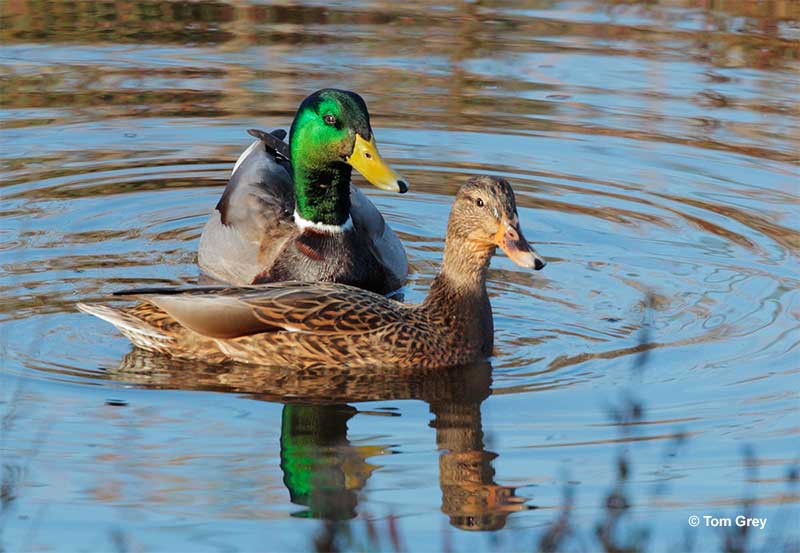
Mangrove Cuckoo
Mangrove Cuckoos are lanky and long-tailed birds that are grayish above and buffy below. They are almost exclusively found in mangrove swamps and hammocks along coastal areas, hence the name.
Due to this specialization, they are especially vulnerable to any habitat changes or degradation, but luckily there is currently no such threat.
As for the second part of its name, then it is not quite adequate. Mangrove Cuckoos emit rough nasal ahrr or gawk notes. Only the Common Cuckoo calls with a cuckoo-cuckoo-cuckoo call.
Marbled Godwit
Marbled Godwits are large shorebirds with long legs and an impressively long, slightly upcurved bill. During the breeding season, they don a striking mottled plumage of browns, white, and cinnamon. This ‘marbling’ is especially noticeable on the back and wings.
When it comes to ‘godwit’, however, then different sources claim different things. Some believe that it is a representation of the bird’s ger-whit call which it gives during display flights.
Others claim that it stems from the Old English god wicht, translated as ‘good creature’, a nod to their historical status as a delicacy during the 15th and 16th centuries.
Marbled Murrelet
Marbled Murrelets are small seabirds native to the North Pacific. Breeding adults are deep brown overall, intricately mottled or ‘marbled’ with brown and off-white below, while non-breeding adults adopt a black-and-white appearance.
The term ‘murrelet’ is a diminutive of ‘murre’, referring to their small size. However, the word ‘murre’ is of unknown origin, but it may be an imitation of the call made by the Common Murre.
Unfortunately, Marbled Murrelets are affected by many human activities and environmental processes. They are listed as endangered on the IUCN Red List.
Marsh Wren
Marsh Wrens are small and plump wrens with a short tail, often held upright almost vertically. They are rusty brown above and pale below with streaks on the tail, wings, and upper back.
Their rapid buzzy and gurgling warbles carry through wetlands and marshes while they grasp onto tall sedges, cattails, and bulrushes. You might even see them do splits while holding onto different plant stalks.
Marsh Wrens occupy the same habitats and look very similar to Sedge Wrens. They are also called Long-billed Marsh Wrens and the latter the Short-billed Marsh Wrens to help distinguish them based on their bill length.
Masked Booby
Masked Boobies, the largest of the genus, are striking seabirds characterized by their stout yet streamlined bodies, heads, and necks and long and pointed wings and tails.
Adults are white overall with black flight and tail feathers. They also have a dark mask around the base of their bills, hence the name. Although they are mostly silent, then during the breeding season they give a variety of whistles and honks.
Both their appearance and vocalizations have earned them many other names. They are also known as Masked Gannets due to their very similar appearance and as Blue-face Boobies due to their dark mask that may appear slightly bluish. Other names include the White Booby because of their plumage and the Whistling Booby because of their call.
Masked Duck
Masked Ducks are reclusive and secretive waterfowl found in the tropical Americas and sometimes in southern Texas. They spend most of their days sleeping amidst marshy vegetation and come out to forage at night, diving for aquatic invertebrates or seeds and roots of aquatic plants.
These ducks have a rather unique appearance that helps them blend into their surroundings. Males are dark rust-colored overall with black mottling, have a black face mask, and bright blue bills with a black tip. Females are a bit lighter with fine brown barring, a buff face with two dark brown horizontal stripes, and a dark bill.
McCown’s Longspur
McCown’s Longspur is a small songbird you can see hopping around and foraging in open grasslands. Males are grayish overall with a chestnut wing patch and black patches on the crown and throat. Females are very sparrow-like.
Their name has gone through quite a few changes. The species was first described in 1851 as the Rufous-winged Lark Bunting. However, the first scientific description of the species was based on a specimen collected by Captain John P. McCown, hence the name.
In 2018, that name raised some controversy since the captain ended up fighting for the Confederacy. Due to this, the species was renamed and is now known as the Thick-billed Longspur for its thick, sparrow-like bill.
Merlin
Merlins are small birds of prey that can be seen throughout the northern hemisphere. These falcons are skilled hunters, specializing in hunting small birds. In North America, they are also known as pigeon hawks because they look similar to pigeons in terms of body shape and flight pattern.
Although you might think their name is related to the wizard from the Arthurian legends, then that is incorrect. The name for this falcon comes from the Old French name for the species – esmerillon.

Mew Gull
Mew Gulls seem like your typical gray-and-white gulls with black accents, blending into the coastal scenery of northwestern North America. However, there is more to their story than meets the eye.
While they were long known as Mew Gulls, recent discoveries in 2021 have split them into two distinct species: the Common Gull and the Short-billed Gull. This decision was based on differences in genetics, morphology, plumage, and vocalizations.
Nevertheless, the name Mew Gull has an interesting background. ‘Mew’ does not refer to the gulls’ calls but rather to their old Dutch name “zee meeuw” which directly translates to “sea gull”.
Mexican Jay
Mexican Jays, formerly known as the Gray-breasted Jays, are medium-sized birds mostly found in pine-oak-juniper woodlands across the southwestern United States and Mexico, hence the name.
They are beautiful birds with blue uppersides, whitish to gray undersides, grayish breasts, and a dingy gray patch on the upper back. Subspecies have some differences in plumage with some appearing brighter and some having more gray.
In fact, in 2011 one of the subspecies was recognized as a separate species due to differences in plumage, morphology, and no evidence of interbreeding. The now new species inhabits the montane forests in the Transvolcanic Belt of central Mexico and is fittingly called the Transvolcanic Jay.
Mississippi Kite
The Mississippi Kite was first observed in the Mississippi Territory, hence the name. These graceful birds often appear to float in the air and are agile enough to catch insects on the wing. They have long, pointed wings and a square-tipped tail, and their plumage is an elegant mix of gray and light gray.
Other than that, they are quite interesting characters. They tend to build their nests next to wasp nests to help deter predators and have surprisingly strong family bonds considering that they are birds of prey.
Nestmates are friendly towards each other and the offspring may even help their parents with the next clutch.
Montezuma Quail
Montezuma Quails were named after the Aztec Emperor Moctezuma Xocoyotzin. He expanded the Aztec Empire to its greatest size and he was also in power when the Europeans first made contact with the indigenous people of Mesoamerica.
The birds themselves resemble plump chickens or adorable stuffed animals. Males sport intricate mottling, striping, and spotting in black, brown, white, and tan, while females are subtly marked with cryptic browns and whitish lines, earning them the nickname the Harlequin Quail.
However, they are also affectionately dubbed the Fool’s Quail. And for good reason. These birds are masters of stealth, preferring to evade detection by running for cover and then freezing, relying on their cryptic coloration to blend seamlessly into their surroundings.
Their elusive nature often leaves hunters feeling outwitted and frustrated.
Mottled Duck
Mottled Ducks, also called Mottled Mallards, look like hybrids between female Mallards and American Black Ducks.
The three species are also closely related and Mottled Ducks are sometimes mistakenly considered to be the subspecies of one or the other. Appearance-wise, the sexes look quite similar.
They have mottled brown-and-buff bodies, a pale buffy head, and a dark cap and eye stripe. Males have yellow bills while females have black bills with an orange tip.
Mountain Bluebird
As the name suggests, Mountain Bluebirds are found in the mountainous areas of western North America. They forage in open places with a few trees, such as prairie or sagebrush steppes, pouncing on insects from elevated perches, sometimes hovering before going in for the kill.
Male Mountain Bluebirds look like feathery pieces of sky. They are slightly darker sky-blue above and light blue below and have a whitish vent area. Females, however, look like cloudy days. They are mostly gray overall with a brownish undertone and have tinges of light blue on their wings and tails.
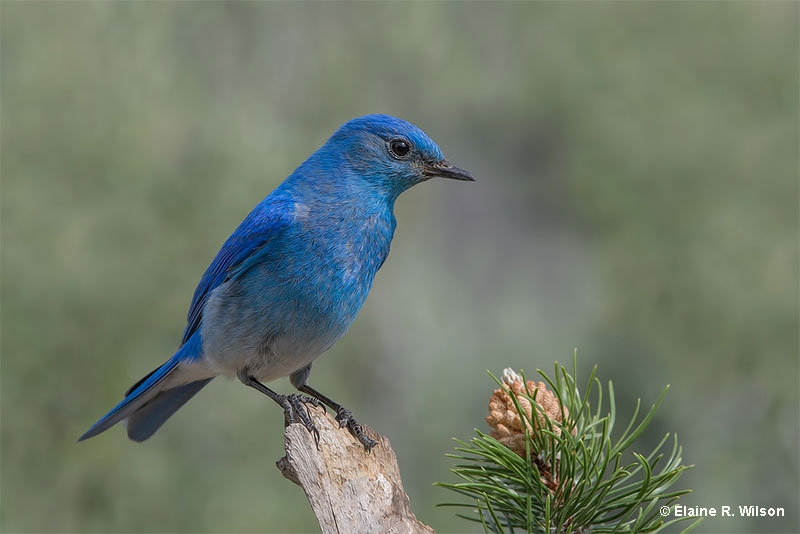
Mountain Chickadee
Mountain Chickadees are commonly found in the mountainous areas of the western United States and Canada. They are mostly residents, although some individuals may migrate locally, ascending the mountains in the summer and descending to the foothills in the winter.
Sporting the classic black-and-white plumage of chickadees, you can tell them apart from the others by a distinctive white stripe over their eyes.
These lively birds whistle a sweet fee-bee and sound the alarm with a frantic chick-a-dee. The latter is a common call for many other chickadee species and also the reason for their name. They may repeat parts of the call, especially the last syllable. The more they repeat it, the higher the threat.
Mountain Plover
Mountain Plovers, adorned in dainty tan above and whitish below, stand out for their unique habitat preferences.
Unlike most plover species who prefer to live in wetlands and near water, these small shorebirds favor dry habitats with short grass instead. They breed in the high plains of North America and migrate south, wintering along the border of the United States and Mexico. However, despite the name, they do not live in the mountains.
The misnaming can be traced back to 1832 when American naturalist John Kirk Townsend encountered these plovers near the Rocky Mountains while they were migrating southward, mistakenly assuming that this was their natural habitat.
Mountain Quail
The Mountain Quail stands alone as the sole representative of its genus Oreortyx. Thriving in the mountainous chaparral and woodland regions west of the Rocky Mountains, these birds are known to venture as high as 9,800 feet above sea level.
During late summer, fall, and winter, they gather into family groups of up to 20 birds and forage along the ground, dashing through brush and undergrowth with surprising speed and agility.
Their distinctive appearance includes a prominent topknot and brown-chestnut-white-gray plumage which helps them blend into their surroundings.
Mourning Dove
Mourning Doves effortlessly blend into their open-country habitats, their delicate buffy-tan plumage providing perfect camouflage. They have long tails with black borders and black spots on their wings.
Their appearance is quite similar to that of the European Turtle Dove, which is probably why it was formerly called Turtle of Carolina or just turtledove. The species has also been called the long-tailed dove and rain dove.
However, it’s their mournful cooing that lends them their common name, as their haunting calls evoke a sense of solemnity and reflection.
Mourning Warbler
The name Mourning Warbler might initially seem puzzling, given the bird’s lively demeanor and cheerful song. Males serenade with a joyful warbling churry-churry-chorry-chorry melody while fluttering through the air.
They forage energetically, hopping on the ground or traversing the branches to snatch up insects and fruit. Even their plumage is cheerful, adorned in warm olives and yellows!
So, where does this name come from? Surprisingly, it is tied to the male’s gray hood, as it supposedly resembles a mourning veil.
Mute Swan
Mute Swans are large and regal white waterfowl. However, their cygnets come in two color morphs: gray and white, also known as Royal and Polish respectively. Their name originates from their comparatively quieter nature compared to other swan species.
Although Mute Swans are native to Eurasia, they were introduced to North America around the late 19th century as decorative birds in zoos, parks, and large estates.
Some escaped individuals successfully established breeding populations, and the species is now rather widespread and mostly considered invasive. Interestingly enough, its closest relatives are swan species native to Australia and South America, despite its Eurasian origin.
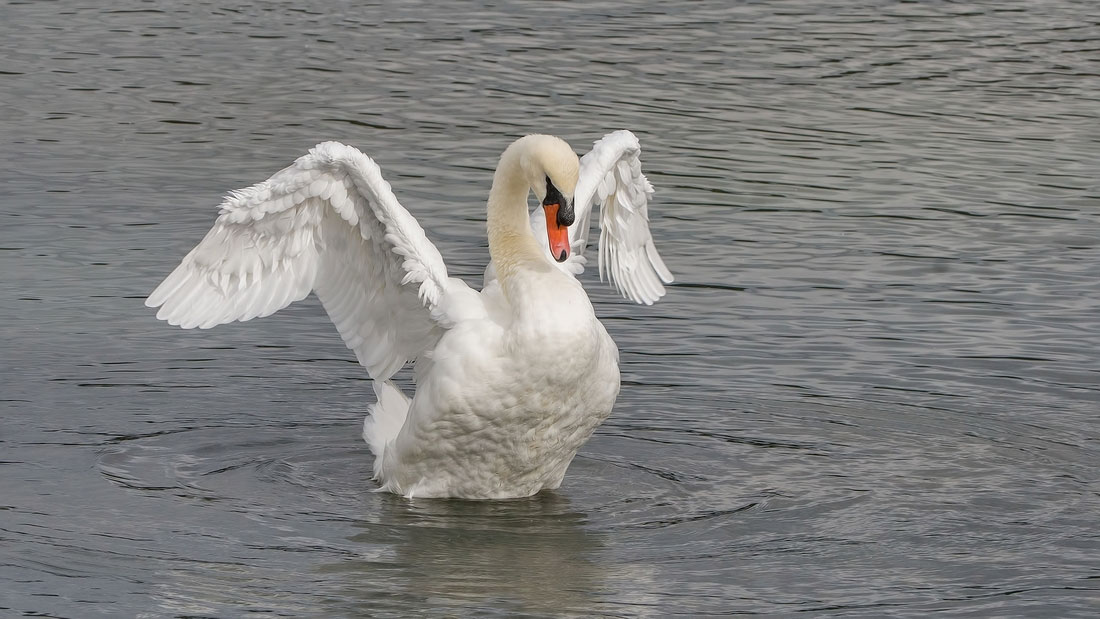
Bird Families That Start With M
- Mergansers – A group of large fish-eating diving ducks known for their serrated bills and shaggy crests.
- Mangos – A genus of hummingbirds consisting of eight mostly green species, inhabiting Central and South America.
- Mountain-gems – A collective term for various species of brilliantly colored hummingbirds found in mountainous regions from the southwestern United States to the Isthmus of Panama.
- Moorhens – A group of medium-sized water birds resembling chickens, often seen in marshes and near lakes.
- Murrelets – A group of small seabirds with mainly black-and-white plumage belonging to the auk family. They are known for their swift underwater movements.
- Murres – Murres are dapper, black-and-white seabirds that nest in large colonies on crowded sea cliffs and are known for their impressive diving abilities.
- Motmots – A family of colorful birds native to the woodlands in the neotropics, characterized by their unique racket-shaped tail-tips.
- Macaws – A group of large and brightly colored parrots native to Central and South America, also popular pets.
- Manakins – A family of small, brightly colored birds with decorative feathers inhabiting the American tropics, known for their elaborate courtship displays.
- Magpies – A group of intelligent and vocal birds from the corvid family characterized by their black-and-white plumage and omnivorous diet. It is worth noting the Australian Magpie and the Magpie-robins do not belong to the corvid family and the Black Magpie is a treepie.
- Magpie-jays – Magpie-jays is a genus consisting of two species characterized by their long tails, black-white-blue plumage, and intelligent and social behavior.
- Martins – Various species of swallows in the Hirundinidae family, known for their swift and agile flight.
- Mockingbirds – A group of songbirds famous for their ability to mimic other species’ calls, songs, and sounds.
- Mynas – A group of medium-sized starlings that can mimic sounds. They are native to Southern Asia but have also been introduced to North America and are often considered invasive.
- Meadowlark – A group of colorful, grassland-dwelling birds, known for their melodic songs and ground-nesting behaviors.
More in the series: starting with E – start with L – starting with U – starting with S
